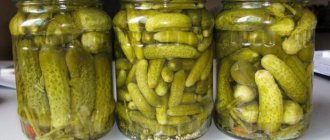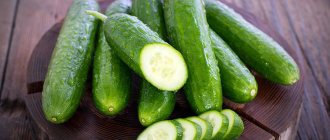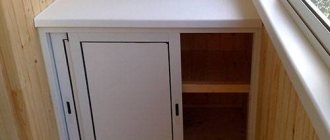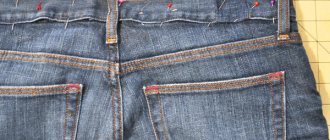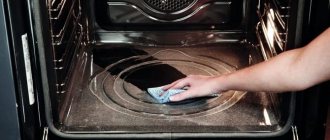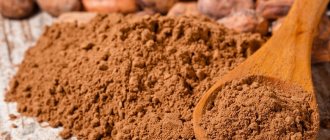Those who have a gas oven sometimes encounter a problem when the top of the baked goods is not baked, but the bottom is already starting to burn. Some try to attribute this to the fact that there is a strong flame and there is no way to clearly regulate the temperature, while others blame it on the presence of problems in the functionality of the device. In reality, the oven works properly, but the basic rules for its use are not observed.
Very rarely do housewives read the instructions after purchasing a device, but it contains a mention of how to handle the device. First of all, you need to know that it is better not to use baking sheets in a gas-type oven at all, this prevents the heat from being distributed evenly. It is better to use racks where you can place a container with baked goods.
It's all in the slab
The main feature of gas stoves is the heating coming from below, which is the most difficult to regulate. Therefore, if the baked goods inside are not baked well, although the bottom is almost black, then the problem is most likely due to improper distribution of heat. In this case, you can call a specialist or try to fix the situation yourself. There are several ways.
- Place a special baking stone in the gas oven. Its secret lies in its porous structure and high heat capacity; it heats up evenly and acts as a kind of heat transfer buffer. This stone is made from fireclay clay, which is used for laying stoves. Many craftsmen replace this attribute with ordinary red brick; it accumulates heat no worse.
- At the very bottom of the stove you can place a baking sheet filled with coarse rock salt. You will need about a kilogram and a half. You will be surprised, but salt perfectly removes all the excess heat, thereby allowing the cake to bake evenly. It can be stored in a gas oven for years without spoiling at all. Some people use sand for the same purpose.
- Place a bowl of water under the baking tray. Water also helps the gas oven heat evenly. It is advisable to choose a larger and deeper container for it, otherwise during prolonged baking it will all evaporate. But you should know that this method is more suitable for instant baking.
The bottom of the cake may burn if you use a drip pan instead of a baking sheet. It greatly restricts the movement of hot air in the oven, the baked goods do not have time to bake inside, their edges and top dry out and burn. It is correct to cook on a special aluminum baking sheet or grill.
Rules for using the oven
Some people do not know or forget that there are certain rules for using a gas oven. Even seemingly small things like an extra frying pan or broiler can cause your cake to burn.
So what do you need to know?
- Before placing baked goods in the oven, you must remove all unnecessary items from it so as not to disturb the circulation of air flow.
- Then you need to preheat the oven thoroughly. You should set the temperature to the highest possible temperature and wait about 15 minutes.
- Afterwards, the temperature is adjusted to the required level, and after a few more minutes a baking sheet with baked goods is placed in the oven.
- It is advisable to place the baking dish or the baking tray itself in the middle so that there is enough space around for heat circulation.
- You need to monitor the readiness of baked goods in a gas oven through a special window, after turning on the backlight. It is highly undesirable to open the door during cooking.
- You can check the readiness of the pie with a toothpick or just a match. You need to pierce the pastry in the middle, and if the dough does not stick, it means it is well baked.
- Now you can turn off the gas stove. Do not rush to remove the pie; it should stand in the oven for another 5-10 minutes.
Each stove comes with detailed instructions. It is advisable to study it carefully so that the baked goods turn out perfect. Some models have their own characteristics that must be taken into account when cooking.
Secrets of temperature regime
Sometimes the recipe does not indicate the temperature at which the dish must be baked, or the temperature setting for a microwave oven or electric stove is indicated. Therefore, it is useful for housewives who cook food in a gas oven to familiarize themselves with the following information.
- Buns, pizza and miniature pies are baked at 220 degrees.
- For preparing lasagna, large filled pies, and meat in foil, a temperature of 200 degrees is required.
- Fish and meat are best baked at a temperature of 160-180 degrees.
- Meringue should be baked at 140 degrees.
If the bottom burns, but the baked goods are not baked
The heating of a gas oven is difficult to regulate. Sometimes the heat inside the appliance is not distributed correctly, causing baked goods to cook unevenly. This deficiency can be eliminated independently in one of the following ways.
Russian oven effect
If the oven is hot but not cooking, place two or three fireclay bricks on the bottom of the oven. They absorb heat thanks to their porous structure and distribute it evenly throughout the oven .
The bricks are calcined for 1 hour in the oven, setting the maximum temperature, then they are left to cool in a closed device. If the products are subsequently baked unevenly, the location of the bricks is changed: placed in the corners, laid in the center or distributed along the walls. Only experimentally determine the successful position and obtain a baked product.
Note! You can use red bricks - the effect will be the same.
Salt on a baking sheet
Pour 2-3 packs of rock salt onto an old baking sheet and distribute it evenly along the bottom. The layer thickness is 3 cm. Hot salt lowers the temperature and the food cooks evenly.
Experimentally determine the best position for baking a baking sheet with salt - at the bottom of the oven or on its top shelf. Salt turns yellow or brown over time. This does not affect the heat transfer process. Salt does not absorb odors, so it is used repeatedly.
Attention! Instead of salt, quartz sand is sometimes poured onto a baking sheet.
Water in a pan
Water also helps distribute heat properly. The method works in cases where baking time does not exceed 30 minutes. Water is poured into a baking tray or any large container and placed under baking. The evaporation from the dish with water prevents the cakes from drying out; the steam evenly distributes the heat throughout the oven.
Thick-walled dishes with high sides
Cast iron or ceramic cookware with thick walls heats up evenly and also releases heat. The heat is distributed evenly over the top of the baked goods, and the product is browned.
Attention! To ensure the baked goods are baked, place the baking sheet at the very top of the oven. The surface of the pie is greased with sunflower oil or egg for better heating.
Or maybe it's the recipe?
It happens that, despite manipulations with the stove, the bottom of the baked goods still burns, but the top remains raw. Then it’s worth thinking about a possible problem in the test itself. As you know, each type requires an individual approach.
- If the biscuit does not rise and burns.
In order for the top of this capricious dough to bake well and the bottom not to burn, you need to make it fluffy. To do this, beat the whites separately from the yolks and put the sponge cake in the oven immediately after kneading. It is important that the oven is heated to 200 degrees, not higher, so that the crust does not set (it will prevent the biscuit from rising). After 15 minutes, the temperature can be reduced to 170 degrees.
- If the bottom of the shortcrust pastry burns.
Problems with shortbread baking can arise when the dough is kneaded for a long time, then it turns out hard, like a cracker, and easily burns. In this case, the top is almost always baked. To make the dough crumbly, you need to use only egg yolks, add softened butter (not melted), and cool all ingredients before mixing.
- What to do if the bottom of the yeast dough burns, but the top is not baked?
First of all, you need to knead it thoroughly and not fill it with flour. And, of course, any dough that uses yeast in the recipe must “stand” for a while. If you immediately put it in the oven, it will form a thick crust and burn.
- What to do if puff pastry doesn't bake?
It happens that instead of crispy plates of golden brown dough, the housewife ends up with one wet, unbaked cake. To avoid this situation, the butter in the puff pastry should not be melted, but crushed with a knife. In this case, the oven temperature should be high - 250-260 degrees.
- If the top and middle of the butter pie remain raw.
Rules for using the oven
Regardless of the type and type of oven, safety and baking regulations are followed. The cake burns at the bottom and dries out on top, often due to incorrect use of the oven.
Basic rules for operating the oven:
- Before cooking begins, everything is removed from it. Sometimes an unbaked top and a burnt bottom do not indicate an inappropriate temperature, but the presence of foreign objects in the oven that prevent the heat from being distributed correctly.
- Before cooking, preheat the chamber at maximum temperature for 10 minutes, then set the desired mode.
- The baking tray is placed in the middle of the cabinet. It is necessary to leave space inside where air can circulate. If the baked goods still burn on the bottom, place the baking sheet on the very top. They study the instructions for the model - perhaps some technological feature of preparation is described there.
- Burnt bottoms may be caused by the door being left ajar during cooking. It is closed tightly, and the baking is monitored through the viewing window in the door by turning on the backlight.
- If the peculiarity of the oven is excessive heating of the lower part, the baking sheet is placed slightly higher than the middle. Then the product will bake evenly.
How to properly bake in a gas oven?
Contrary to popular belief, the oven is not a capricious device if you know how to handle it. Unfortunately, when a gas model replaces the electric one, they begin to treat it in exactly the same way, thereby making the first and main mistake. To ensure that the top and bottom of the products are always baked evenly, you should remember the following rules:
- The temperature recommendations given in the recipes must be strictly followed. Do not try to speed up the cooking of baked goods by increasing the flame.
- When baking a large cake, you should use a lower temperature than when working with a small product. A large workpiece is baked evenly and completely only when it is kept for a long time at medium temperature.
Tip: Each gas oven is designed differently, so you should read the instructions before using it. Sometimes the use of “non-original” pallets leads to blocking the movement of hot air, which is why the top of the products remains damp while their bottom begins to burn.
- If the recipe does not indicate the temperature, you can use universal data: 180ºС for large pies, 200-210ºС for small baked goods.
- Initially, the workpieces in the gas oven should be placed on the middle level. After some time, we evaluate the quality of the product. If the bottom darkens and the top does not set, we move the container to the upper level. Sometimes you need to brown the crust at the bottom, in this case we move the product as low as possible.
- Forms for baking products in the oven must be greased with vegetable or butter, odorless natural fat. Then you don’t have to worry about the risk of the cake deforming or sticking to the dish.
If you don’t want to constantly lubricate the surfaces with products that, as a result of heat treatment, turn into not the most useful substances, you should use butter-based dough. It does not stick to the molds, it turns out tasty and crumbly. Moreover, most recipes allow the use of such a universal base.
Conclusions and useful video on the topic
Video about why the bottom of the dish burns, but the top does not brown:
The article reflected the most common problems with gas ovens, which sooner or later every housewife may encounter. The main thing is to diagnose faults, and only then begin to eliminate them.
If during the inspection you discover a burner malfunction or other serious damage, you should contact a specialist. And if a gas leak is detected, immediately call emergency services .
Are you more familiar with the problem of poor baking than anyone else? Tell us what method you used to eliminate it. Leave useful recommendations, ask questions to our experts and other users - the feedback form is located below.
Secrets from experienced housewives
When even following the above rules does not help, and the product still burns, you have to use techniques tested by experienced chefs. At home you can do the following:
- The pies will stop burning if you place a fireproof brick at the very bottom of the chamber. Just first you need to clean it, wash it if necessary and dry it.
Tip: The tops of savory products will set and bake in the oven a little faster if you brush them with beaten egg yolk before cooking. And sweet preparations are treated with sweetened and strongly brewed black tea for the same purpose.
- When there is no brick or you don’t want to use it for aesthetic reasons, you can take coarse salt. It is placed in a bowl made of heat-resistant material and placed under the baking rack.
- They also sometimes place a container of water in a gas oven. The liquid evaporates, raising the temperature slightly. But the products do not burn, but are evenly baked. If you want a golden brown crust to appear on your culinary masterpiece, water should be used only in the first half of baking. A dish prepared in this way also turns out juicier than usual.
Despite the simplicity of the methods, they have proven their effectiveness. If such approaches do not give the desired result, and the top and bottom continue to bake unevenly, this indicates violations of the rules for the production of semi-finished products.
The subtleties of baking a pie in a slow cooker
- Check if the recipe is suitable for this model. The power and functions of different multicookers are not the same, so the cooking time indicated for one model will not work on another.
- In some cases, the “Multi-cook” mode will help, in which you manually set the time - 15-20 minutes.
- It will take more time to cook in a slow cooker: 50-60 minutes are recommended for baking. However, you cannot open it earlier.
- The “Keep Warm” mode allows the cake to finish baking in the multicooker.
Do not put more into the slow cooker than it can bake. A simple way to determine the quantity: the height of the pie when raw should not be more than 3 fingers.
Pies require the cook to have certain skills and familiarity with the technique in which they will be baked. But even if you fail, you shouldn’t let go and give up the idea of enjoying baked goods.
See also: There is some dumpling dough left!!! What can be done from it
Features of temperature conditions
In order for a gas oven to help bring the workpiece to the desired state, and not spoil it, the temperature and time parameters must be strictly maintained. Here are just the basic recommendations, which may vary slightly depending on the characteristics of the filling and the composition of the baking dough:
- The bottom of the pizza will not burn, and its top will be covered with an appetizing crust if you bake it at a temperature of 210-220ºC for 20-25 minutes.
- For tall pies with filling, the optimal temperature is 180-200ºС. The processing time will be 35-45 minutes.
- Low pies and various buns are processed for half an hour at a temperature of 210-220ºС.
- Meringue, regardless of which oven is used, is baked at 140ºC until its top, bottom and sides are dry and covered with a dense crust.
- To bake lasagna, the temperature is set to 190-200ºС. The duration of exposure may vary. The main thing is that the top layer of the product sets and browns.
Causes
Any gas oven has a heater at the bottom. Therefore, the main heat supply occurs in this plane. The simplest models are not equipped with additional heat accumulators and have weak ventilation flows. Therefore, convection inside is insufficient. Hot air is distributed unevenly. If electric stoves have separate heaters on top, then gas stoves simply cannot have them: the fire will not burn with this arrangement of elements.
The problem occurs in both small and large ovens.
The second possible reason is an incorrect choice of heating temperature. When reading a recipe, the housewife may not pay attention to what technique is proposed to be used. Perhaps the author, when indicating the temperature and duration of baking, meant an electric oven or even a microwave. Then burning in a gas oven is likely.
Often the reason for unsuccessful baking is the recipe itself. If the dough is too rich in sugar and fat, the bottom will be too heavy and the top too oily. In this case, the raw dough will remain not only on top, but also in the middle. Before pouring into the mold, it is also important to stir the entire mass well. There should be no lumps or separated liquid in it. This dough will quickly separate in a heated oven, and the pie will turn into a shapeless mass with a burnt bottom.
When baking in a gas oven, it is very important to choose the right pans. You need to understand that the heat in the chamber comes only from below, and then is distributed throughout the volume. Therefore, for a large mass of dough, you cannot choose a mold that is small in diameter, especially if it is not a mousse cake or a tall, fluffy sponge cake. The top and even the middle will be too far from the heat source. You will have to keep the cake in the oven much longer to ensure the entire mass is baked, during which time the bottom will burn heavily. Experienced housewives also advise abandoning traditional split rings in favor of complex-shaped containers with an uneven bottom.
The main reasons for poor oven performance
Regardless of the cost of the oven and the brand of the manufacturer, no owner is immune from unpleasant discoveries during operation. It often happens that old Soviet ovens, which have been standing for twenty years, bake and heat better and more efficiently than their brand new foreign counterparts.
There can be quite a lot of problems associated with gas appliances - sometimes the gas does not flow well, the oven goes out, the burner does not burn well, or a leak occurs. Therefore, it is extremely important to observe safety measures when operating gas-using equipment.
There are many reasons for this, from simple user inattention to serious system breakdowns. Here are some of them:
- poor care of the oven, burning of the thermocouple tip and the inside of the oven due to food debris that got there;
- poor quality of the factory assembly of the oven, in which the body becomes loose over time and displaces the working elements;
- disconnected electricity (if there are elements operating from it);
- poor quality of installation, legs are not aligned (over time, small distortions make themselves felt, affecting the operation of internal elements);
- poorly thought out gas supply system, use of a flexible hose of a length longer than necessary;
- insufficient pressure level under which the gas is supplied.
If your gas oven is equipped with a convection function, then it should cook food as expected. This means that the reason for the poor functionality of the equipment should be excluded and looked for in something else.
Of course, there are many more reasons for poor oven performance, but these are the main ones that craftsmen encounter.
Some of the breakdowns are quite difficult and dangerous to fix on your own. Therefore, it is advisable to contact a gas company specialist. Diagnosis of these faults is simple and consists of a thorough inspection of the equipment.
What to do
You can figure out what to do if the bottom of your baked goods burns in a gas oven only by identifying the cause. Before using a gas oven, it is especially important to read the instructions carefully. It is included even with the simplest models. Some cookers only require the use of certain types of baking trays and trays, while others are designed to work with additional baking stones. This is the key difference between a gas oven and an electric one. You can use proven methods.
Consider the rules of use
Manufacturers' recommendations will help you get the perfect baked goods. Therefore, you need to familiarize yourself with the operating features of a particular model in advance. For example, some ovens cannot accommodate trays from another manufacturer or universal ones. They won't have the right holes or will take up too much space around the edges. As a result, air flows will be weakened and the temperature will no longer be uniform. If the bottom is constantly burning in the oven, and the top is pale, just find an original baking sheet and always use it to solve the problem.
Universal pallets can also be modified. For example, make additional holes or cut off the sides to enhance convection.
The simplest oven models do not provide additional heat distribution. Therefore, the instructions already indicate that it is necessary to change the baking position, especially with a large volume of dough. The manufacturer may also indicate the need for prolonged preheating. It is better to turn on the oven 30-40 minutes in advance, during which time the entire volume will warm up and the walls will gain the desired heat. After 20-30 minutes of baking, you need to lift the baking sheet along with the mold.
Select mode
Gas ovens are especially sensitive to temperature conditions. It should be taken into account that it is a little more difficult to achieve heat stability in them than in similar electric models. Therefore, it is better to lower the temperature a little to avoid burning the bottom. The larger the baking volume, the lower the temperature should be, but the longer the cooking time. On the contrary, for small products it is worth changing the parameters in the opposite direction so that the top is baked sufficiently.
Universal mode – 180 degrees. At this temperature, the bottom rarely burns in a gas oven. But to brown the top crust, you will have to raise the pie higher at least 15 minutes before the end of cooking. If the cake is tall, the maximum allowable temperature is 200 degrees. If it's pizza or tart, you should choose a mode of 220-240 degrees.
Important tips for baking in the oven
It matters not only what we cook in the oven, but also the correct selection of temperature, dishes and taking into account other points. It is also important to study the manufacturer’s recommendations and follow the basic rules for using a gas oven as set out in the instructions. Perhaps there is a point in it that you forgot about, and this could be the reason for poorly prepared food.
Before cooking, we recommend that you remember the following rules:
- There is no need to increase the temperature to the limit if the cake is not baked - this is the most common mistake of housewives. Most likely, the pie will be ruined by burning on the bottom. Each dish has its own temperature. For example, if the pie is large, the temperature is lower and the time is longer, and vice versa. The optimal temperature is 180 °C for large cakes and 210 °C for small ones.
- Do not place the pan too close to the heat source . If the temperature in the oven is distributed correctly, then you need to place the pan in the middle.
Modern models of gas ovens, which are equipped with convection fans, do not require special rules. They cook food almost perfectly. However, their cost is significantly higher.
Gas-powered ovens are fairly reliable appliances. If the equipment stops working correctly without baking the top or bottom, it is not necessary to immediately call a specialist. You can start with a careful inspection - after all, in most cases, such a problem can be dealt with on your own.
Secrets of housewives
To “tame” the oven, experienced housewives recommend putting something inside that will accumulate heat and then dissipate it. This may be a special stone for stoves. But it is expensive, weighs a lot and takes up a lot of space in the kitchen. It's easier to use regular fire bricks. It needs to be washed and dried, then placed in the oven. For the same purpose, place a bowl of coarse rock salt down. This is done so that any dishes quickly brown due to dry heat.
In order for the baked goods to be juicier and softer, and the bottom not to burn, it is recommended to use a container with water. It is placed in the oven immediately upon heating, and then removed 15 minutes after the start of baking. In this case, the temperature is set slightly below average or recommended. If your existing gas oven does not have convection, this method will work best. Streams of steam will constantly move, equalizing the temperature, and heat will not accumulate below.
During the cooking process, you do not need to constantly open the door and check the condition of the dish. All the heat from the top of the chamber disappears, while the bottom continues to heat up. The overall temperature drops, the stove continues to operate. That's why the bottom burns. If you still had to open the oven, it is better to keep it in this state for at least a couple of minutes. Then the temperature in the oven will drop evenly, and the heating will be similar.
It is not difficult to achieve perfect baking of desserts and non-sweet pies or dishes in a gas oven. It must be remembered that any model has its own characteristics, for example, reduced convection activity. Heating from below can cause the bottom to constantly burn, but the situation can be corrected by adjusting the recipe or choosing the right temperature. Simple additions to a standard oven in the form of a baking tray with salt, a bowl of water or a fire brick will also help achieve better results.
Malfunctions and breakdowns of gas ovens
Gas equipment is repaired only by professionals - gas service employees or service technicians if the stove is under warranty. Only experts will tell you why the top of the oven does not heat up or the flame goes out, and what parts need to be replaced in the oven.
Some problems not related to gas supply and distribution can be eliminated yourself. Next, we will tell you what indicates a malfunction of gas equipment.
The oven is smoking
If the flame is yellow-red, the burner is unstable. The color of the flame changes when the gas does not burn completely or there is not enough air when it is supplied. Because of this, soot appears on the outside of the bottom of the cookware.
Since ovenware is usually dark in color, it is difficult to see soot, so they focus on the containers in which food is cooked on the stove - the soot spreads to all burners. Soot is more noticeable on light-colored dishes.
Causes of soot and solutions:
- The injectors are clogged. Remove the cover and clean the holes. Abrasives are not used as they clog the gas passages.
- Low quality gas. A common situation when using gas cylinders. The cylinder will have to be changed (with a main gas supply this rarely happens).
You cannot change the diameter of the hole on the injectors yourself.
The burner in the oven does not light or does not light well
The most annoying factor for equipment owners. Unsuccessfully trying to light the oven is nerve-wracking, and for those who use matches or a gas lighter, it can cause burns. Poor ignition may be caused by clogged injectors. In this case, open the lid and clean the gas supply holes with a needle or thin wire.
If this does not help, call a specialist, since the cause may be a serious technical breakdown: a crack in the spark plug, an insulation failure, a burned thermocouple, a malfunction of the solenoid valve.
Important! When correcting a breakdown on your own, disconnect the stove from the power supply and turn off the gas supply.
The burner does not burn well and sometimes goes out
There are several reasons for this malfunction; not all of them can be fixed on your own:
- If the flame is weak not only in the oven, but also on all burners with the gas taps open, the gas pressure may have decreased. Call a technician to check this parameter.
- If the flame becomes weaker as all burners are turned on, check the condition of the gas hose. Perhaps the stove is moved so close to the wall that it pinches the hose.
- Ignition occurs, but after closing the door the flame goes out. The temperature regulator or valve stem may be broken. They check it this way: remove the handle and turn the stem. If the problem cannot be solved, call specialists.
- Modern stoves have a gas supply control system. If there is a disturbance in the supply, the thermoelectromagnetic valve shuts off the gas and the burner goes out. Sometimes this causes the burner to shut down. Such damage can only be corrected by specialists.
Worn rubber seal
If the gas stove does not work well because the oven door does not fit tightly to the body, the cause of the problem can be eliminated by replacing the rubber seal. Due to long-term use, it dries out and becomes deformed, so the oven cannot reach the required temperature.
A way to determine that the rubber band has become unusable: turn on the cabinet and place your hand under the door.
If it gets warm, it means the seal needs to be replaced.

